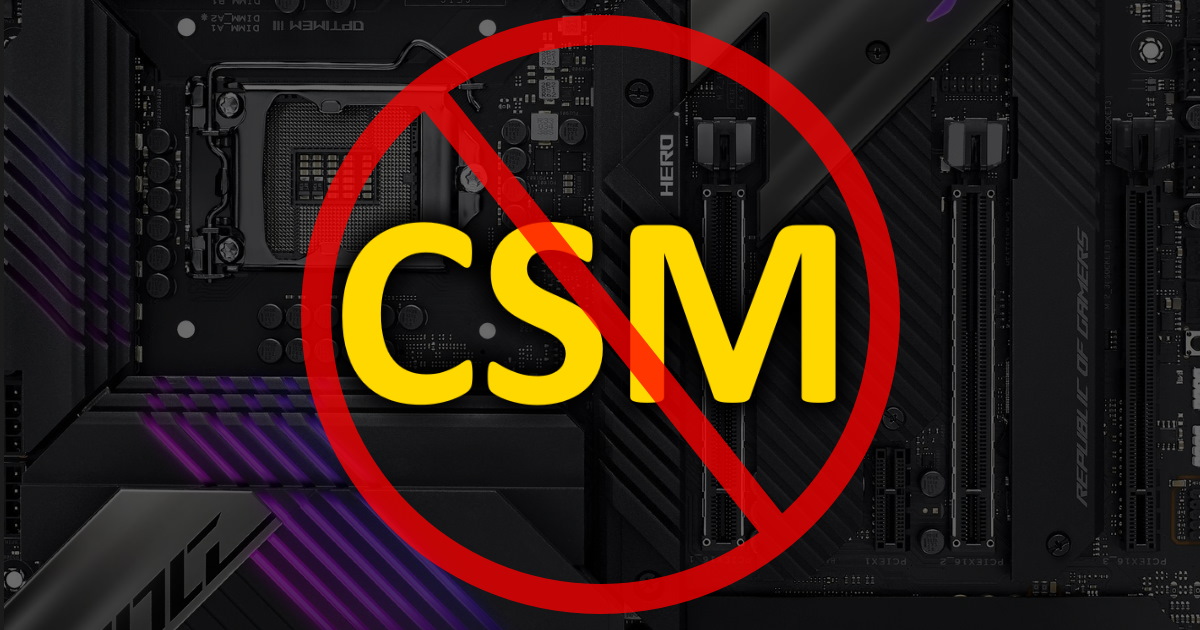A few weeks ago I did a bios update on an Asus Prime Z490-A. After the update the system would not boot. The bios listed no bootable devices although it clearly saw my C: drive. After all too many hours of fruitless trouble shooting, including reloading the bios, I assumed (incorrectly) something in the bios got irrepairably corrupted as it made no sense that it saw the drive but did not identify it as a bootable device. The drive booted fine in another machine so I was reasonably confident the drive and the W10 install on it were fine (this proved correct). At that point I gave up and, since its been three years since my last new build, I simply decided to accelerate what I already was planning and ordered an Asus Prime Z790, 13900k CPU, DDR5 memory, new case, etc. Today I assembled everything and the same problem occurred.
Again, after trouble shooting all day, I finally found a way of getting the new system to boot. But, I do not at all understand why the solution works and I am not at all happy with it. I eventually got around to checking, the CSM (Compatibility Support Module) under the bios Boot tab. I found it disabled but greyed out so it was not possible to enable it and the UEFI bios. After doing the Google thing, I found a lot of others with a similar problem and someone wrote that by not using the CPU for graphics, and installing a graphic card, the CSM settings were no longer grayed out and it then became possible to launch CSM. So, I installed an EVGA graphics card I happened to have, enabled CSM, and the damn things now boots. Just to see what would happened, I removed the graphics card, the no bootable drive problem returned, and CSM was greyed out and not enabled.
I now have installed a big graphics card with very annoyingly noisy fans and creating a lot of heat I do not need. I do indeed strive for a very fast snappy machine but I do not run games and the Intel CPU graphics serves me fine.
So, what is this all about? My previous three year old Z490 worked fine until I tried to fix something that was not broken by updating the bios. My brand new Z790 has exactly the same issue. The i9-13900K CPU has integrated graphics (as did the previous i9-10900k) but it does not appear the intergrated CPU graphics is usable if one wants to boot into Windows (this cannot be right). Obviously, I am missing something and getting more and more annoyed as the Geforce GTX fans loudly fill my otherwise silent office with noise.
I would certainly appreciate some advice. At this point I do not know enough to do much more than only explain the problem but I have to believe there must be a way to use the CPU's integrated graphics feature as I have done for years.
Again, after trouble shooting all day, I finally found a way of getting the new system to boot. But, I do not at all understand why the solution works and I am not at all happy with it. I eventually got around to checking, the CSM (Compatibility Support Module) under the bios Boot tab. I found it disabled but greyed out so it was not possible to enable it and the UEFI bios. After doing the Google thing, I found a lot of others with a similar problem and someone wrote that by not using the CPU for graphics, and installing a graphic card, the CSM settings were no longer grayed out and it then became possible to launch CSM. So, I installed an EVGA graphics card I happened to have, enabled CSM, and the damn things now boots. Just to see what would happened, I removed the graphics card, the no bootable drive problem returned, and CSM was greyed out and not enabled.
I now have installed a big graphics card with very annoyingly noisy fans and creating a lot of heat I do not need. I do indeed strive for a very fast snappy machine but I do not run games and the Intel CPU graphics serves me fine.
So, what is this all about? My previous three year old Z490 worked fine until I tried to fix something that was not broken by updating the bios. My brand new Z790 has exactly the same issue. The i9-13900K CPU has integrated graphics (as did the previous i9-10900k) but it does not appear the intergrated CPU graphics is usable if one wants to boot into Windows (this cannot be right). Obviously, I am missing something and getting more and more annoyed as the Geforce GTX fans loudly fill my otherwise silent office with noise.
I would certainly appreciate some advice. At this point I do not know enough to do much more than only explain the problem but I have to believe there must be a way to use the CPU's integrated graphics feature as I have done for years.

